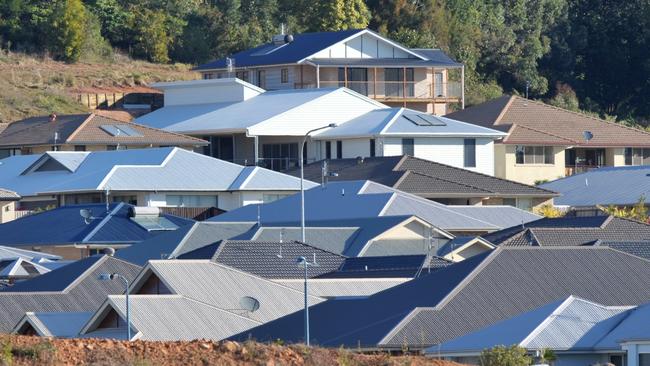Gold Coast tops list of cities in housing stress
Families face housing stress in the cities, while many single people struggle to secure affordable housing in the regions, a new report warns.

Almost a million Australian households could be in housing stress within 20 years, a new report warns.
Already 640,000 households are either homeless, living in overcrowded dwellings or spending more than 30 per cent of their income on rent or mortgage payments, a study from the UNSW City Futures Research Centre finds.
Low-income families are over-represented, the research finds. More than half of those in housing stress are families, data from the 2021 census reveals, despite representing 40 per cent of Australian households.
Big cities have the most unmet housing need, with the Gold Coast, Sydney’s inner southwest and Melbourne’s west hotspots.
Some capitals have made inroads into unmet housing needs since the previous census in 2016, notably Perth and Adelaide, but Sydney’s growth in unmet need has kept pace with overall housing growth, up about 11 per cent in the five years.
In regional areas, single-person households are facing pressure for appropriate accommodation, a clear indication that more housing diversity is required outside the capital cities.
The study comes as housing affordability continues to bubble as a political issue, with the Labor government committing to a $10bn Housing Australia Future Fund to build 10,000 new affordable homes before 2030.
Matching funding from states and territories is anticipated to deliver a further 10,000.
The funding commitments are part of a new National Housing Accord, in which all levels of government along with institutional investors such as superannuation funds and the construction sector are aiming to build one million new homes over five years from 2024.
Questions have been raised about the economic case for greater private sector investment in social and affordable housing programs.
The UNSW study, commissioned by the Community Housing Industry Association, concludes that the rates of unmet housing need ranges between 5 per cent and 8 per cent of the population depending on location, with Sydney (7.6 per cent) and Brisbane (7.5 per cent) at the higher end.
“Meeting the needs of households over a 20 year period would equate to a 6.5 per cent average annual growth in non-market housing,” it says. “This averages to around 47,000 homes per year over the period.”
Community Housing Industry Association chief executive Wendy Hayhurst said it “is harder to think of a higher priority than giving all Australians a stable and secure home.”
“The commonwealth has laid important foundations for expanding social and affordable housing and it is reassuring to see them seriously grapple with this challenge (but) we will need to muster additional investment from all levels of government and superannuation funds to meet this challenge,” Ms Hayhurst said.




To join the conversation, please log in. Don't have an account? Register
Join the conversation, you are commenting as Logout